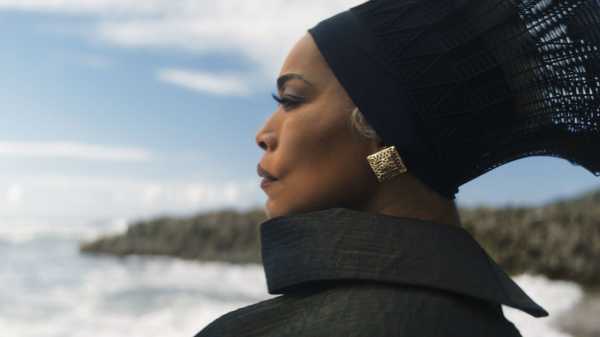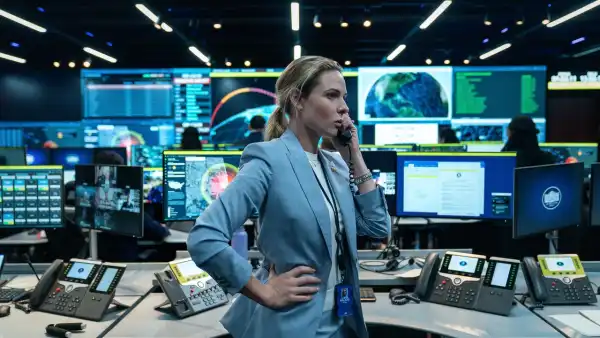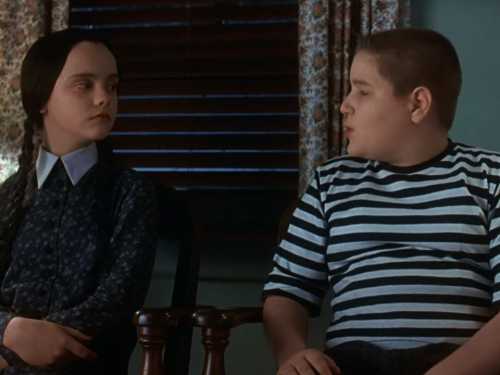
The trailer for “Black Panther: Wakanda Forever” offered high hopes that the movie would be “The Godfather: Part II” of superhero movies—one which, after the mighty success of the first installment, would bear the cinematic fruit of even greater directorial freedom and audacity. Instead, it came out more like “Ant-Man and the Wasp,” a sequel by a distinctive filmmaker whose inspirations, for which I had similarly high hopes, appeared more tightly tethered to the demands of franchise-building. The best thing about “Black Panther” is the rare passion that its director, Ryan Coogler, brings to what is usually a perfunctory element of superhero movies, the backstory. For Coogler and his co-writer, Joe Robert Cole, world-building carried the implicit force of nation-building. Their meticulous attention to the history and politics of Wakanda fulfilled, with a rare vitality, the primary pleasures of comic-book movies: the joyful fervor of realizing imagined designs.
The franchise is shadowed in grief: Chadwick Boseman, who plays the title character, T’Challa, a.k.a. Black Panther, died in 2020. That loss is woven into the fabric of “Wakanda Forever”—the movie begins with the death of T’Challa, whose absence becomes the mainspring of the plot. The Wakandan throne is now held by Queen Ramonda (Angela Bassett), mother to T’Challa and Shuri (Letitia Wright), a scientist. Shuri’s laboratory powers Wakanda’s defense; with the death of T’Challa, Wakanda faces new threats from rivals who assume it to be weakened.
Wakanda is, of course, the sole known source of vibranium, an invulnerable metal with a wide range of supernatural powers—and refuses to export it. Wakandan troops at a Malian outpost face an attack by French forces seeking vibranium. An American military detachment, too, pursues the mineral, albeit in an unexpected place—the floor of the Atlantic Ocean—and these forces also come under attack and are destroyed; the U.S. government blames Wakanda for the assault and is preparing a response. However, Wakanda had nothing to do with the operation, and, to prevent an American counter-offensive, Ramonda must find the perpetrators. Instead, the perpetrators find her: there’s an undersea kingdom called Talokan, led by K’uk’ulkan, a.k.a. Namor (Tenoch Huerta Mejía), who seeks to wage a world war and demands that Wakanda join forces with him on pain of its own devastation.
In “Wakanda Forever,” the world-building is centered on Talokan (emphasis on the last syllable) and its backstory, which is centuries-old and built on real-world history. Talokan’s backstory, and its possession of vibranium, suggests—as Namor recognizes—his homeland’s inherent affinity with Wakanda. (He gets the movie’s one great gnomic line of greeting-card philosophy: “Only the most broken people can be great leaders.”) The idea of comradeship between these nations is solidly principled but the dispensing of details is miserly—just enough to establish it as more than a plot device. The movie’s early setup leaves no doubt about where the story is going: toward Namor’s, and Talokan’s, final showdown with Wakanda. The only suspense involves Wakandan leadership: the question of who will be the nation’s military champion in solo combat against Namor. This, I wouldn’t dare spoil, not least because the best that the movie has to offer are the meanderings of its plot, which are as graceful as a battleship’s hairpin turn. (The most fascinating aspect of Namor is meta: the character appeared in the very first Marvel comic book, in 1939—ahead of the franchise’s far more celebrated superheroes.)
The strength of Coogler’s dramatic imagination is held back by a sense of franchise obligation, of mandatory steps to set up Round Three (and more). In Reed’s second “Ant-Man” film, his exuberant and playful approach to the character was constrained by the intricate but rickety story construction that involved many other Marvel figures. In his second round with the “Black Panther” franchise, Coogler, too, seems to be executing compulsory figures. The dramatic logic isn’t so much clear as it is transparent in its effortful connection of the far-flung and far-fetched action; the characters are chess pieces whose dramatic autonomy is sacrificed to the planned outcome.
“Wakanda Forever” assembles the prime elements of a gratifying movie, starting with the cast, which features return visits from Wright and Bassett, and also from Danai Gurira, as the general Okoye; Lupita Nyong’o, as Nakia, T’Challa’s ex; and Winston Duke, as M’Baku, the Jabari leader; along with new members such as Dominique Thorne, as a young American genius who’s recruited to the Wakandan cause; and Michaela Coel, as the warrior Aneka (who is identified, in her comic-book incarnation, as queer, though the asexual and romance-starved movie only winks and nudges). Ruth Carter’s design is as stylish and eye-catching as it was in the earlier film (here, I found myself marvelling, no pun intended, at the aesthetic refinement of two parallel, chevron-like carvings on the blade of a spear).
This time around, however, the movie’s aesthetic elements appear merely decorative, and mind-numbing grandiosity takes the place of behavioral nuance. The fight scenes in the sequel, unlike those in the earlier film, are neither thrilling nor frightening; the martial artistry appears merely functional, and one complex chase scene, set in Boston, is rendered facile and disposable. (For that matter, Coogler’s attention, though all too brief, to the fine points of ritual and ceremony reflects more authentic devotion than the unfurling of the plot.)
Also, this time around, the forceful performances are, oddly, monotonously literal, with vehemence overriding subtlety and underlined intention effacing any trace of spontaneous expression. With the sequel’s narrowed substance, the range of performance is narrowed, too, and the actors, who are among the most compelling of the day, hardly get the screen time to go beyond the dictates of the overcrowded text and project their inherent complexities and their formidable presences. As a result, the movie is nearly stolen by its newcomers, and, above all, by one supporting actor whose performance is given the movie’s only distinctive cinematic twist: Mabel Cadena, who plays Namora, Namor’s female counterpart. Her nose and mouth are kept under a breathing mask; she acts, fiercely, primarily with her eyes.
The images of “Wakanda Forever” allow for little creative interpretation; the performances are slotted into the plot like puzzle pieces. The script is the main product, and it’s engineered with the precision of a high-tech machine, with all the artificial artistry to match. We critics seeing “Wakanda Forever” are exhorted, in Disney’s press release and even on the screening ticket, to “refrain from revealing spoilers, cameos, character developments and detailed story points.” I’m always cautious with spoilers—like most viewers, I share the pleasure of discovering plot twists and piquant details as they unfold onscreen—but the studio’s extreme request, though it risks leaving critics with little worth mentioning, is nonetheless reasonable, given the very nature of franchise cinema, of which this film is a prime example. The script enshrines a new scripture, a new canonical set of characters and characterizations , and the film is something more than entertainment—it plays the role of revelation, issued from on high.
That sense of revelation, despite its corporate basis, felt utterly authentic and personal in the first “Black Panther” film. It was a mark of Coogler’s distinctive artistry, which transcended the commercial and franchise-building purpose to which it was put. “Wakanda Forever” is overwhelmed by the call of duty. Nonetheless, Coogler flashes his dramatic power in a quick melodramatic touch that would be criminal to even hint about, and which provides an all-too-brief vision of what the entire movie could have been. ♦
Sourse: newyorker.com






